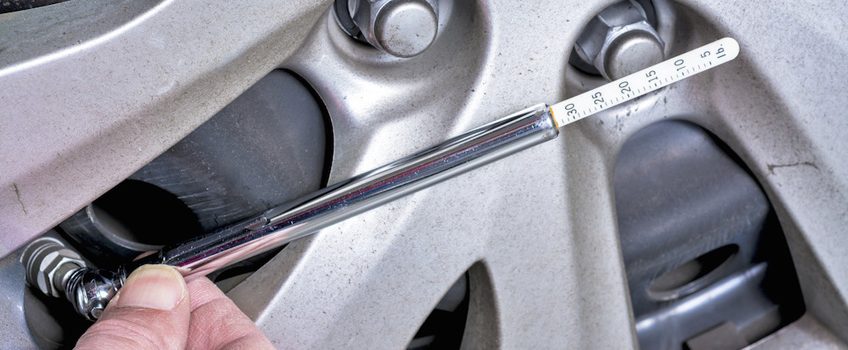How to Maintain Tires
Difficulty: Easy
Duration: 5-10 minutes
How often: Once every month plus before and after road trips
Maintaining good tires help improve your car’s gas mileage, improve tire life, and give a smoother ride. It is vital that you consistently inspect your tires for pressure and wear to make sure that your vehicle is safe. By following the steps below, you can learn how to maintain tires, saving you money and helping your vehicle operate at its best.
Things you’ll need from your garage or your local NAPA AUTO PARTS Store:
- Tire gauge
- Tread depth gauge (or a penny)
- Air compressor
CHECK FOR TIRE WEAR
The tires are the only contact that your car has with the road, so proper maintenance is essential to safe driving. Check your tires for wear at least once a month as well as before and after road trips. There are many factors that contribute to wear on tires. Measuring your tires’ tread will help determine whether it is time for tire adjustments or replacement.
Step 1
Locate the wear bars between the tire treads. The wear bar is a narrow bridge of rubber in the groove, spanning individual tread blocks. If the tread is worn down level with the wear bar or close, the tire should be replaced.
Step 2
Use a tread depth gauge or a penny to more accurately measure wear across each tire, checking four points per tire. Place the metal rod of the tire depth gauge in the groove and push the casing down until it touches the tire. Check the depth reading. If it reads 2/32″ or less, replace the tire. If you do not have a tread depth gauge, insert a penny into the groove of the tread with Lincoln’s head face down. If you see the top of Lincoln’s head, replace the tire.
Step 3
Look for uneven wear across the tire and from one tire to another. If one or more tires is wearing unevenly across its tread or compared to the other tires, you may have low tire pressure or a problem with your tires or suspension system. Have a professional diagnose and repair any balance or alignment issues, and regularly rotate your tires to ensure even wear.
CHECK TIRE PRESSURE
Before you begin to assess your tires, make sure that they are cool. This ensures a more accurate reading, as pressure increases with heat. Tires automatically lose pressure through time and bumps and hard surfaces you encounter while driving. Recommended pressures vary, so check your owner’s manual or a label in the driver door jamb for the recommended tire pressure for your vehicle.
Step 1
Make sure your tires are cool prior to inspection. Park your car on a flat surface to get the most accurate reading.
Step 2
Remove the cap from the valve of your tire. Press the tire gauge on the valve to determine pressure. You may have to press hard to ensure that you have it inserted correctly. If you hear any air escaping, the valve is not correctly seated into the gauge. Compare the reading with the recommended tire pressure.
Step 3
If you determine that a tire needs air, insert the air pump into the valve and fill it to its recommended pressure level. If you have over-filled it, don’t worry. You can release air from your tire by pushing on the metal needle in the center of the valve stem with a fingernail or pen tip. Most tire gauges also include a tool or feature to let air out of the tire.
Step 4
Once the air has been adjusted to the proper level, replace the cap. Check the remaining tires in the same fashion.
IMPORTANT TIPS:
- Check your tires for wear at least once a month and before and after road trips.
- When checking tire pressure, make sure tires are cool and your car is parked on a flat surface to get the most accurate reading.
- If your tires have green valve stem caps, the tires are filled with nitrogen. Instead of using atmospheric air from a compressor, return to the facility that filled your tires – or any shop offering nitrogen – to have them refilled. (See note regarding nitrogen below.)
- Check your owner’s manual or ask your local mechanic for tire rotation recommendations. Rotating tires every 10,000 miles is a good rule of thumb.
Note: If you’re not already using nitrogen in your vehicle’s tires, consider making the switch. Offered in many auto care facilities, nitrogen increases your fuel economy, extends tire life and helps your vehicle ride more smoothly. Nitrogen is an inert gas with a larger molecule than oxygen, so it does not escape the tires as easily as regular air. It runs cooler and is affected less by changes in outside temperature. Regular air changes 1psi for every 10-degree temperature change, meaning a 40-degree change from morning to afternoon will have a 4psi difference just during the day. This change could trigger a warning in a vehicle equipped with a Tire Pressure Monitoring System (TPMS).


